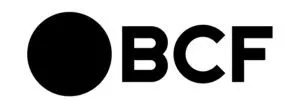- within Strategy topic(s)
- with readers working within the Healthcare, Oil & Gas and Securities & Investment industries
While a trademark is often associated with a word, a logo or a slogan, it can bound a lot more than that.
Canada allows the registration of several types of non-traditional trademarks, such as scents, textures, and tastes. One particular scent that may well remind you of your childhood is that of CRAYOLA crayons, which is currently pending registration in Canada.
Sounds may also be registered as trademarks. In Canada, the St-Hubert restaurant jingle, for example, is registered as a sound trademark, as is the Toys "R" Us jingle. The Ricola brand's singing voice, which is used to market in association with throat lozenges, is another example.
Trademarks that are 3D, holographic or in motion may also be registered. Since 2019, 3D marks are the non-traditional trademarks that have generated the greatest number of trademark applications. Indeed, more than 400 such applications have been filed in Canada. These include the shapes of all the charging units for Apple's electronic devices, for example.
Product packaging is yet another type of non-traditional trademark for which registration is frequently sought in Canada, with nearly 200 applications to date. The transparent box in which the Ferrero Rocher chocolates are sold, for example, is one such trademark. Staying with chocolate, another example is the golden packaging for Lindt's bunny-shaped chocolate.
Product packaging may also stand out because of its colour, as in the case of Tiffany's blue box, which we covered in a previous article. A particular colour applied to a product may also be considered as a trademark, such as the red sole in Louboutin shoes, which was also the topic of another one of our articles. The same applies to ornamental features that enhance product recognition, such as the Crocs moulded shoe, which is protected by industrial design and which we discussed in another article.
In short, possibilities abound when it comes to making your products or services distinguish themselves from others on the market. We often forget, however, that the very expression of our creativity may be protected by trademark or industrial design registration, which would give us a long-term competitive edge.
It is worth noting however that a concept or idea cannot be protected as such; instead, it is the embodiment of that concept or idea that may, as the case may be, be protected by means of a trademark, industrial design or copyright.
The content of this article is intended to provide a general guide to the subject matter. Specialist advice should be sought about your specific circumstances.



